The purpose of this survey is to obtain some basic articles of information which would be helpful to the activation of the potential amateur tennis players and the popularization of the sport concerned as well.
The number of the subject persons in the survey totaled 728 : male 349, female 374 unknown 5 of the adult participants of both sex belonging to a tennis school in Yokohama. Average age 47.1 SD=11.83. The period of the study between 3 to 9 of the August in 2013.
The method based on was the unsigned questionnaires filled with the following items and put into the prepared container just after the submission ; *where you used to play the year before and *with whom usually as well *what cue to come to play *favorite lesson menu *moments to lose appetite to play *period more than 3 months, if it was, being absent from and the reason.
The synopsis of the answers to the above questions ; Most of the answer-givers looked strongly influenced by their friends and family who enjoy playing tennis and also many people have been attracted to the sport through after-school activities, television programs, Manga and animation pictures. They are found of great use unless ignored.
The interesting replies to the question of what has made the participants feel dull were ; *unpleasant atmosphere under games *sentiments on less improvement even after repeating exercises *difficulty to enjoy tennis because of patchy rallies. Those three were the 3 major reasons of tennis people frustration.
In order to sustain public interest and to maintain the present population in tennis, it would be vitally important to stimulate the party and persons concerned and even encourage them to construct a welcoming human contacts and then we might be free of negative notions such as bad atmosphere.
抄録全体を表示
